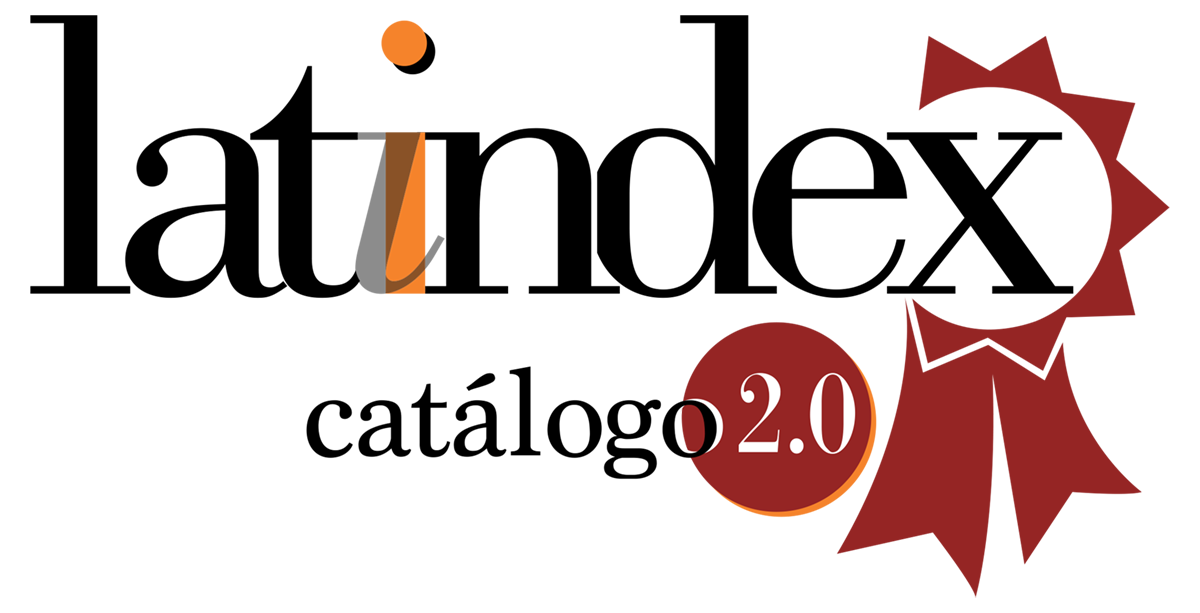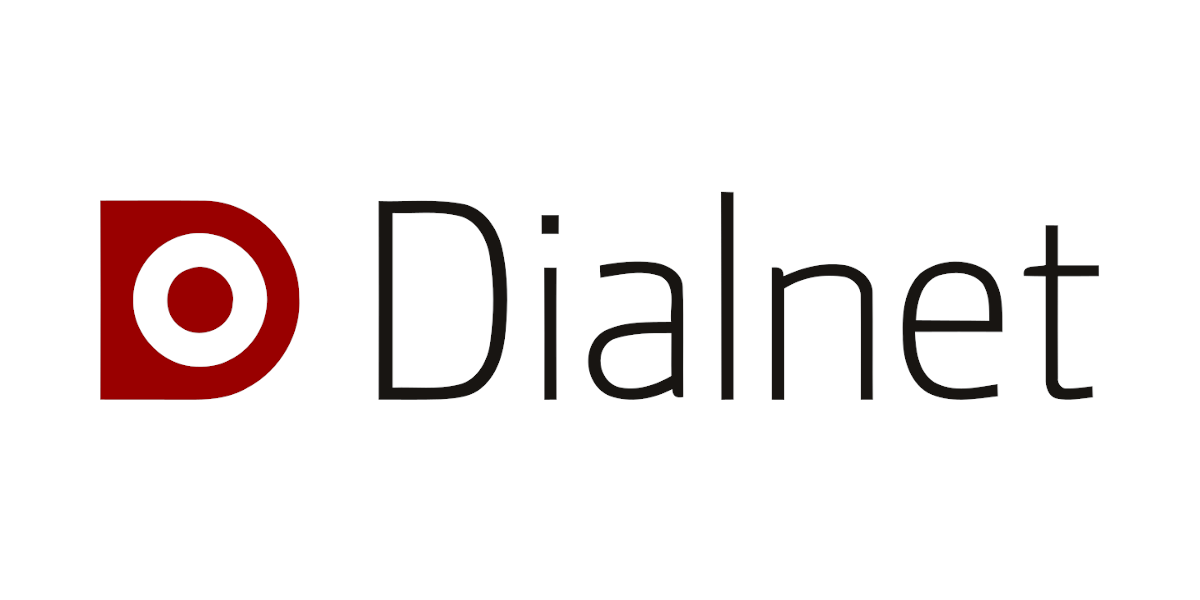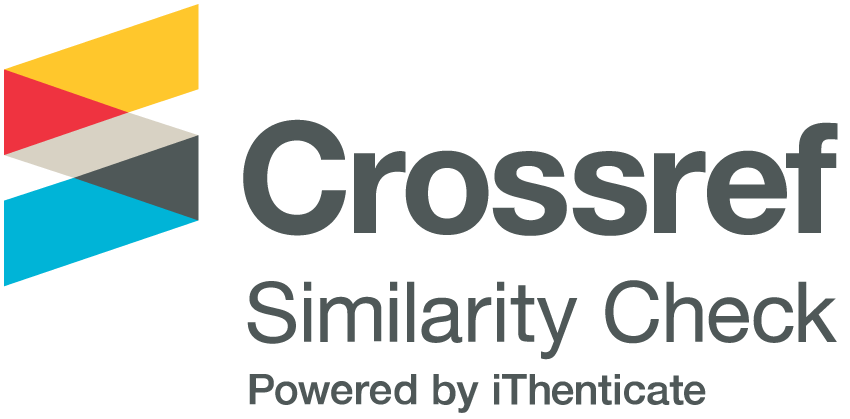Television and Political Polarisation in Spain and Andalusia. The Case of the 23 July General Election
DOI:
https://doi.org/10.54790/rccs.102Keywords:
polarization, general elections, electoral campaigns, political parties, media, AndalusiaAbstract
Political polarisation has become, in recent times, one of the hottest topics within political science. However, there are still very few studies that address the phenomenon as applied to television and from a regional perspective. For that reason, the aim here is to compare political polarisation by television channel and political party, from an Andalusian perspective. The newscasts of five channels were recorded during the 23 July election campaign in Spain. We operationalised polarisation as an affective distance, calculated through sentiment analysis, and used ANOVA models to compare mean polarisation by channel and party. The results show more polarised media coverage of Vox and Sumar than that of PP and PSOE, although with some variation depending on the channel. We also found that the media coverage of the Andalusian regional channel presents more positive sentiments than the national channels.
Downloads
Metrics
References
ACE [Red de Conocimientos Electorales] (2024). Campaña electoral. https://aceproject.org/main/espanol/ei/eie09.htm
Barreda, M. (2021). La polarización política en las democracias actuales: expresiones y consecuencias. Cuadernos Manuel Giménez Abad, 21. https://doi.org/10.47919/FMGA.CM21.0109 DOI: https://doi.org/10.47919/FMGA.CM21.0109
Berrocal-Gonzalo, S., Waisbord, S. y Gómez-García, S. (2023). Polarización política y medios de comunicación, su impacto en la democracia y en la sociedad. El Profesional de la información, 32(6). https://doi.org/10.3145/epi.2023.nov.22 DOI: https://doi.org/10.3145/epi.2023.nov.22
Binder, S. (2015). The Dysfunctional Congress. Annual Review of Political Science, 18(1), 85-101. https://doi.org/10.1146/annurev-polisci-110813-032156 DOI: https://doi.org/10.1146/annurev-polisci-110813-032156
Bishop, B. (2008). The Big Sort: Why the Clustering of Like-Minded America Is Tearing Us Apart. New York: Houghton Mifflin Harcourt.
Blumenthal, S. (1980). The permanente campaign. Inside the world of elite political operatives. Boston: Beacon Press.
Caramelo-Pérez, L. M. (2020). Análisis del discurso emocional de Donald Trump en la campaña electoral de 2016. Ámbitos. Revista Internacional de Comunicación, 47, 267-287. https://doi.org/10.12795/ambitos.2020.i47.13 DOI: https://doi.org/10.12795/Ambitos.2020.i47.13
Castromil, R. y Chavero, P. (2012). Polarización política y negativismo mediático. Similitudes y diferencias en la prensa de derecha y en la de izquierda en las elecciones autonómicas y municipales de 2011. Redmarka- CIECID, 8, 55-81. cienciared.com.ar/ra/doc.php?n=1655 DOI: https://doi.org/10.17979/redma.2012.01.08.4734
Cazorla, A., Montabes, J. y López-López, P. C. (2022). Medios de comunicación, información política y emociones hacia partidos políticos en España. Revista Española de Ciencia Política, 58, 83-109. https://doi.org/10.21308/recp.58.03 DOI: https://doi.org/10.21308/recp.58.03
CEMOP (2023). III Encuesta Nacional de Polarización Afectiva. Universidad de Murcia. https://www.cemopmurcia.es/wp-content/uploads/2023/11/III-Encuesta-Nacional-Polarizacion-Politica-cemop.pdf
Chalif, R. (2011). Political media fragmentation: echo chambers in cable news. Washington DC: Georgetown Repository. https://repository.library.georgetown.edu/bitstream/handle/10822/552906/chalifRebecca.pdf;sequence=1
Consejo Audiovisual de Andalucía (2022). Barómetro Audiovisual de Andalucía. Junta de Andalucía.
Corrales, J. (2005). In search of a theory of polarization: Lessons from Venezuela, 1999-2005. Revista Europea de Estudios Latinoamericanos y del Caribe, 79,105-118. https://www.jstor.org/stable/25676187 DOI: https://doi.org/10.18352/erlacs.9666
Crespo, I. (2023). Introducción. En III Encuesta Nacional de Polarización Política. CEMOP. Grupo de Investigación de la Universidad de Murcia.
Darr, J., Hitt, M. y Dunaway. J. (2018). Newspaper Closures Polarize Voting Behavior. Journal of Communication, 68(6), 1007-1028. https://doi.org/10.1093/joc/jqy051 DOI: https://doi.org/10.1093/joc/jqy051
DiMaggio, A. (2019). Slanting the News: Media Bias and Its Effects. En A. Nadler y A. J. Bauer (Eds.), News on the Right: Studying Conservative News Cultures. Oxford Academic. https://doi.org/10.1093/oso/9780190913540.003.0011 DOI: https://doi.org/10.1093/oso/9780190913540.003.0011
Dunaway, J. (2013). Media ownership and story tone in campaign news. American Politics Research, 41, 24-53. doi: 10.1177/1532673X12454564 DOI: https://doi.org/10.1177/1532673X12454564
Ellger, F., Hilbig, H., Riaz, S. y Tillmann, P. (2021). Local Newspaper Decline and Political Polarization - Evidence from a Multi-Party Setting. https://doi.org/10.31219/osf.io/nhwxs DOI: https://doi.org/10.31219/osf.io/nhwxs
Entman, R. (1993). Framing: Toward Clarification of a Fractured Paradigm. Northwestern University Journal of Communication, 43, 51-58. DOI: https://doi.org/10.1111/j.1460-2466.1993.tb01304.x
Ericson, R., Baranek, P. y Chan, J. (1987). Visualizing Deviance: a study of news organization. University of Toronto Press.
Eurobarómetro (2022). Encuesta de Medios y Noticias 2022. Parlamento Europeo.
Flaxman, S., Goel, S. y Rao, J. M. (2016). Filter Bubbles, Echo Chambers, and Online News Consumption. Public Opinion Quarterly, 80(1), 298-320. https://doi.org/10.1093/poq/nfw006 DOI: https://doi.org/10.1093/poq/nfw006
Fletcher, R. y Jenkins, J. (2019). Polarisation and the News Media in Europe. Brussels: EPRS.
Garret, K., Long, J. y Seon, M. (2019). From Partisan Media to Misperception: Affective Polarization as Mediator. Journal of Communication, 69(5), 490-512. https://doi.org/10.1093/joc/jqz028 DOI: https://doi.org/10.1093/joc/jqz028
Gentzkow, M. y Shapiro, J. (2010). What Drives Media Slant? Evidence From U.S. Daily Newspapers. Econometrica, 78(1), 35-71. https://doi.org/10.3982/ECTA7195 DOI: https://doi.org/10.3982/ECTA7195
González, J. J. (2008). Los medios en la democracia avanzada. ¿Hacia una democracia de audiencia? En J. J. González y M. Requena (Eds.), Tres décadas de cambio social en España (2ª ed.). Madrid: Alianza.
Hall, S., Critcher, C., Jefferson, T. y Clarke, J. N. (1978). Policing the Crisis: Mugging, the State and Law and Order (Critical social studies). Holmes and Meier. DOI: https://doi.org/10.1007/978-1-349-15881-2
Hallin, D. C. y Mancini, P. (2004). Comparing Media Systems. Three Models of Media and Politics. Cambridge University Press. DOI: https://doi.org/10.1017/CBO9780511790867
Hansen, K. M. y Kosiara-Pedersen, K. (2017). How campaigns polarize the electorate: Political polarization as an effect of the minimal effect theory within a multi-party system. Party Politics, 23(3), 181-192. https://doi.org/10.1177/1354068815593453 DOI: https://doi.org/10.1177/1354068815593453
Hawdon, J., Ranganathan, S., Leman, S., Bookhultz, S. y Mitra, T. (2020). Social Media Use, Political Polarization, and Social Capital: Is Social Media Tearing the U.S. Apart? En G. Meiselwitz (Ed.), Social Computing and Social Media. Design, Ethics, User Behavior, and Social Network Analysis. Springer.
Hernández, E., Anduiza, E. y Rico, G. (2021). Affective polarization and the salience of elections. Electoral Studies, 69, 102203. https://doi.org/10.1016/j.electstud.2020.102203 DOI: https://doi.org/10.1016/j.electstud.2020.102203
Horwitz, R. B. (2007). On media concentration and the diversity question. In P. M. Napoli (Ed.), Media diversity and localism (pp. 9-56). Mahwah, NJ: Lawrence Erlbaum. https://doi.org/10.1007/978-3-030-49570-1_17 DOI: https://doi.org/10.1007/978-3-030-49570-1_17
Iyengar, S. y Hahn, K. S. (2009). Red media, blue media: Evidence of ideological selectivity in media use. Journal of Communication, 59, 19-39. doi: 10.1111/j.1460- 2466.2008.01402.x DOI: https://doi.org/10.1111/j.1460-2466.2008.01402.x
Iyengar, S., Sood, G. y Lelkes, Y. (2012). Affect, not ideology: A social identity perspective on polarization. Public Opinion Quarterly, 76, 405-421. doi: 10.1093/ poq/nfs038 DOI: https://doi.org/10.1093/poq/nfs038
Jones, D. (2001). Party polarization and legislative gridlock. Political Research Quarterly, 54(1), 125-141. https://doi.org/https://doi.org/10.1177/106591290105400107 DOI: https://doi.org/10.1177/106591290105400107
Layman, G. C., Carsey, T. M. y Horowitz, J. M. (2006). Party polarization in American politics. Characteristics, Causes, and Consequences. Annual Review of Political Science, 9(1), 83-110. https://doi.org/10.1146/annurev.polisci.9.070204.105138 DOI: https://doi.org/10.1146/annurev.polisci.9.070204.105138
Lee, S. (2017). Implications of counter-attitudinal information exposure in further information-seeking and attitude change. Information Research, 22(3), 1-14.
Levendusky, M. (2013). How Partisan Media Polarize America. Chicago: Chicago University Press. https://doi.org/10.7208/chicago/9780226069159.001.0001 DOI: https://doi.org/10.7208/chicago/9780226069159.001.0001
Lipset, S. y Rokkan, S. (1967). Cleavage Structures, Party Systems and Voter Alignments: An Introduction. En S. Lipset y S. Rokkan (Eds.), Party Systems and Voter Alignments: Cross-National Perspectives. New York: Free Press.
Lobato, R. M., Moyano, M., Bélanger, J. J. y Trujillo, H. M. (2020). The role of vulnerable environments in support for homegrown terrorism: Fieldwork using the 3N model. Aggressive Behavior, 47(1), 50-57. DOI: https://doi.org/10.1002/ab.21933
LOREG. Ley Orgánica 5/1985, de 19 de junio, del Régimen Electoral General. Boletín Oficial del Estado, 147, de 20 de junio de 1985. https://www.boe.es/eli/es/lo/1985/06/19/5/con
Luengo, Ó. (2011). Debates electorales en televisión. Una aproximación preliminar a sus efectos inmediatos. Revista Española de Ciencia Política, 25, 81-96.
Luengo, Ó., García-Marín, J. y de-Blasio, E. (2021). COVID-19 en Youtube: Debates y polarización en la esfera digital. Comunicar, 29(69), 9-19. https://doi.org/10.3916/C69-2021-01 DOI: https://doi.org/10.3916/C69-2021-01
Maier, J. y Nai, A. (2020). Roaring Candidates in the Spotlight: Campaign Negativity, Emotions, and Media Coverage in 107 National Elections. The International Journal of Press/Politics, 25(4). https://doi.org/10.1177/19401612209190 DOI: https://doi.org/10.1177/1940161220919093
McChesney, R. W. (1999). Rich media, poor democracy: Communication politics in dubious times. New York: The New Press.
Manin, B. (1998). Los principios del gobierno representativo. Madrid: Alianza.
Masip, P., Suau, J. y Ruiz-Caballero, C. (2020). Percepciones sobre medios de comunicación y desinformación: ideología y polarización en el sistema mediático español. Profesional de la información, 29(5). https://doi.org/10.3145/epi.2020.sep.27 DOI: https://doi.org/10.3145/epi.2020.sep.27
Melero, I., Quiles, M. y López, M. (2023). Consumo de medios, exposición selectiva y polarización afectiva. En III Encuesta Nacional de Polarización Política. CEMOP. Grupo de Investigación de la Universidad de Murcia.
Miller, L. (2021). La polarización política en España: entre ideologías y sentimientos. PAPELES de relaciones ecosociales y cambio global, 13(152), 13-22.
Moreno-Mercado, J. M., García-Marín, J. y Luengo, Ó. (2022). Conflictos armados y la construcción de narrativas a través de Twitter. El caso de la guerra entre Armenia y Azerbaiyán. Revista Española de Ciencia Política, 59, 89-114. https://doi.org/10.21308/recp.59.04 DOI: https://doi.org/10.21308/recp.59.04
Mudde, C. y Rovira Kaltwasser, C. (2018). Studying populism in comparative perspective: reflections on the contemporary and future research agenda. Comparative Political Studies, 51 (13), 1667-1693. https://doi.org/10.1177/0010414018789490 DOI: https://doi.org/10.1177/0010414018789490
Mutz, D. C. (2006). Hearing the Other Side: Deliberative versus Participatory Democracy (1a ed.). Cambridge University Press. https://doi.org/10.1017/CBO9780511617201 DOI: https://doi.org/10.1017/CBO9780511617201
Napoli, P. M. (2001). Consumer Use of Medical Information from Electronic and Paper Media: A Literature Review. En R. Rice y J. Katz (Eds.), The Internet and Health Communication: Experiences and Expectations (pp. 79-98). Sage. https://doi.org/10.4135/9781452233277.n3 DOI: https://doi.org/10.4135/9781452233277.n3
Orriols, L. (2021). La polarización afectiva en España: bloques ideológicos enfrentados. EsadeEcPol Insight, 28 (marzo). https://dobetter.esade.edu/es/polarizacion-afectiva
Pariser, E. (2012). The filter bubble: What the Internet is hiding from you. Penguin Books. DOI: https://doi.org/10.3139/9783446431164
Peck, R. (2019). Fox populism: Branding conservatism as working class. Cambridge: Cambridge University Press. DOI: https://doi.org/10.1017/9781108634410
Pew Research Center (2018). News Media and Political Attitudes in Spain. https://www.pewresearch.org/journalism/fact-sheet/news-media-and-political-attitudes-in-spain/
Phillips, J. (2022). Affective polarization: Over time, through the generations, and during the lifespan. Political Behavior, 44(3), 1483-1508. https://doi.org/10.1007/s11109-022-09784-4 DOI: https://doi.org/10.1007/s11109-022-09784-4
Pop, A.-I., Marín Pérez, B. y Pérez-Sánchez, J. (2023). Liderazgo y personalización de la política. Sánchez y Casado en las elecciones generales de 2019: el papel constructor de las televisiones generalistas al bipartidismo. Revista de Ciencias de la Comunicación e Información, 28, 56-76. https://doi.org/10.35742/rcci.2023.28.e282 DOI: https://doi.org/10.35742/rcci.2023.28.e282
Prior, M. (2013). Media and Political Polarization. Annual Review of Political Science, 16(1), 101-127. https://doi.org/10.1146/annurev-polisci-100711-135242 DOI: https://doi.org/10.1146/annurev-polisci-100711-135242
Ramírez-Dueñas, J. M. y Humanes, M. L. (2023). Exposición selectiva y polarización de audiencias. Un análisis a través del consumo acumulado de información política en España. Cuadernos.info, (56), 1-21 https://dx.doi.org/10.7764/cdi.55.59797 DOI: https://doi.org/10.7764/cdi.56.59797
Reinemann, C. y Wilke, J. (2007). It’s the debates, stupid! How the introduction of televised debates changed the portrayal of chancellor candidates in the German press, 1949-2005. Press/Politics, 12, 92-111. DOI: https://doi.org/10.1177/1081180X07307185
Rinker, T. (2022). Package ‘sentimentr’: Calculate Text Polarity Sentiment (Version 2.9.0). https://github.com/trinker/sentimentr
Rivera, J. M., Jaráiz, E. y López, P. C. (2021). Emociones y política. En P. Escandón y S. Levoyer (Eds.), Comunicación pública, pandemia y elecciones. Quito: Corporación Editora Nacional.
Rodríguez, R. y Castromil, A. R. (2010). La circulación social de los encuadres periodísticos en tiempo de campaña electoral: Transmisión, influencia y atribución de responsabilidad. ZER, 15(23).
Röllicke, L. (2023). Polarisation, identity and affect-conceptualising affective polarisation in multi-party systems. Electoral Studies, 85, 102655. https://doi.org/10.1016/j.electstud.2023.102655 DOI: https://doi.org/10.1016/j.electstud.2023.102655
Romero-Martín, G., Caraballo-Pou, M. Á. y Merchán-Hernández, C. (2024). Individual and institutional dimensions of affective polarisation: A proposal for an analytical framework. Revista Española de Sociología-RES, 33(1), a206-a206. https://doi.org/10.22325/fes/res.2024.206 DOI: https://doi.org/10.22325/fes/res.2024.206
Ruiz, L. y Danet, A. (2022). De lo ideológico a lo afectivo. Lecturas actuales sobre la participación y la polarización juvenil en Andalucía ante el auge de la derecha radical. Revista Internacional de Pensamiento Político, 17, 177-200. https://www.upo.es/revistas/index.php/ripp/article/view/7493/6593 DOI: https://doi.org/10.46661/revintpensampolit.7493
Sartori, G. (1999). Partidos y sistemas de partidos. Madrid: Alianza Editorial.
Serrano-Contreras, I.-J., García-Marín, J. y Luengo, Ó. (2020). Measuring online political dialogue: does polarization trigger more deliberation? Media and Communication, 8(4), 63-72. https://doi.org/10.17645/mac.v8i4.3149 DOI: https://doi.org/10.17645/mac.v8i4.3149
Serrano-Contreras, I. J., García-Marín, J. y Luengo, Ó. (2021). Coberturas mediáticas, polarización y reformas educativas en España. Revista de Ciencia Política, 41(3), 497-514. https://doi.org/10.4067/S0718-090X2021005000109 DOI: https://doi.org/10.4067/S0718-090X2021005000109
Sunstein, C. (2009). Going to Extremes: How Like Minds Unite and Divide. Oxford: Oxford University Press. DOI: https://doi.org/10.1093/oso/9780195378016.001.0001
Szabó, G., Norocel, O. C. y Bene, M. (2019). Media Visibility and Inclusion of Radical Right Populism in Hungary and Romania: A Discursive Opportunity Approach. Problems of post-communism, 66(1), 33-46. DOI: https://doi.org/10.1080/10758216.2018.1460208
Taboada Villamarín, A. (2024). Big data en ciencias sociales. Una introducción a la automatización de análisis de datos de texto mediante procesamiento de lenguaje natural y aprendizaje automático. Revista CENTRA de Ciencias Sociales, 3(1), 51-75. https://doi.org/10.54790/rccs.51 DOI: https://doi.org/10.54790/rccs.51
Torcal, M. (2020). ¡Enfrentados y enfados! Una realidad preocupante. Agenda Pública. https://agendapublica.es/enfrentados-y-enfadados-unarealidad-preocupante
Torcal, M. y Comelles, J. (2020). Affective Polarization in Southern Europe and Spain in Comparative Perspective [Manuscrito no publicado]. En Miller, L. (2021), La polarización política en España: entre ideologías y sentimientos. PAPELES de relaciones ecosociales y cambio global, 13(152), 15.
Wagner, M. (2021). Affective polarization in multiparty systems. Electoral Studies, 69, 1-13. https://doi.org/https://doi.org/10.1016/j.electstud.2020.102199 DOI: https://doi.org/10.1016/j.electstud.2020.102199
Waisbord, S. (2020). ¿Es válido atribuir la polarización política a la comunicación digital? Sobre burbujas, plataformas y polarización afectiva. Revista de la Sociedad Argentina de Análisis Político-SAAP, 14(2), 248-279. http://dx.doi.org/10.46468/rsaap.14.2.a1 DOI: https://doi.org/10.46468/rsaap.14.2.A1
Downloads
Published
How to Cite
Issue
Section
License
Copyright (c) 2025 Paloma Egea-Cariñanos; Daniel Bianchi, Mario Delgado-Lillo

This work is licensed under a Creative Commons Attribution-NonCommercial-ShareAlike 4.0 International License.
Funding data
-
Fundación Pública Andaluza Centro de Estudios Andaluces
Grant numbers Pry069/22 Polar-Med: La polarización en los medios de comunicación en Andalucía










